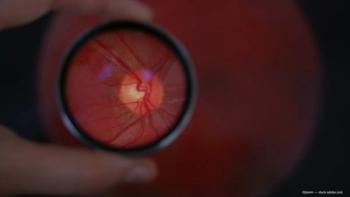
Refractive multifocal IOL offers spectacle independence for patients following cataract surgery
A refractive multifocal IOL (ReZoom, Advanced Medical Optics) is an effective method for diminishing dependence on glasses for refractive cataract surgery patients.
Key Points
San Diego-A refractive multifocal IOL (ReZoom, Advanced Medical Optics [AMO]) is an effective method for diminishing dependence on glasses for patients undergoing refractive cataract surgery, according to results of a prospective, comparative study reported by Jorge A. Cazal, MD, MSc, and Carlos Vergés, MD, PhD, at the American Society of Cataract and Refractive Surgery annual meeting.
The study compared visual performance, rates of spectacle independence, and patient satisfaction in 60 patients with the multifocal IOL implanted and 20 recipients of a monofocal IOL (Clariflex, AMO). The mean IOL powers used were +19.99 D for the multifocal IOL and +16.83 D for the monofocal implant. After surgery, refraction was within 0.5 D of emmetropia in more than 80% of eyes with multifocal IOLs.
Visual acuity testing showed no significant differences between implant groups in terms of best-corrected visual acuity at any distance. Uncorrected visual acuity (UCVA) for distance was excellent in both patients who received multifocal lenses and those who received monofocal IOLs (mean 20/30 and 20/25, respectively). Patients with the multifocal IOLs, however, had better mean near (J3) and intermediate (20/25) UCVA than the controls with monofocal IOLs (J8 and 20/50).
Dysphotopsias were relatively common early after multifocal IOL implantation and were reported by about 36% of patients at 1 month. Those problems, however, diminished over time and were never significant enough to cause any patient to request lens removal. At follow-up at 1 year, about 7% of patients reported occasional perception of dysphotopsias. No other differences were seen between the two IOL groups in terms of postoperative complications.
Newsletter
Don’t miss out—get Ophthalmology Times updates on the latest clinical advancements and expert interviews, straight to your inbox.








































